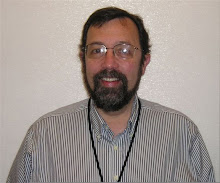An epigenetic model of organizations has to describe development of groups based on the interaction between the genetic underpinnings of human groups and the effect of environment on those groups. The field of Cultural Anthropology points to how human beings self organize based on population. When I first encountered the following “political evolution” model, I did not think that it applied to all human groups, until I saw the spate of books emerging from business publishing touting “tribal” origins of management. Here is the real deal on how humans organize:
A band is the simplest form of human society. A band usually consists of a small kin group, no larger than an extended family or clan. Bands are often egalitarian and have very informal leadership; the older members of the band generally are looked to for guidance and advice and decisions are often made on a consensus basis. There are no written laws, customs are communicated orally, so formal social institutions are few or non-existent. Religion is based on family tradition, individual experience, or counsel from a shaman. Historically, band societies hunt and gather to obtain their food. (O’Neil, 2007; Ember & Ember, 1999)
A tribe consists of a social group organized largely on the basis of kinship. The social structure of a tribe can vary greatly from case to case, but, due to the small size of tribes (usually in the low hundreds), it is always a relatively simple structure, with few (if any) significant social distinctions between individuals. (O’Neil, 2007; Ember & Ember, 1999)
A chiefdom is a more complex society of varying degrees of centralization led by a chief. Cultural evolution describes chiefdom as a form of social organization more complex than a tribe or a band society, and less complex than a state or a civilization. The definition of chiefdom in anthropology: “An autonomous political unit comprising a number of villages or communities under the permanent control of a paramount chief”. (O’Neil, 2007; Ember & Ember, 1999)
A state is a political association with effective sovereignty over a geographic area and representing a population. A state usually includes the set of institutions that claim the authority to make the rules that govern the people in that territory. Status as a state often depends on being recognized by other states as having internal and external sovereignty over a defined geographic area. (O’Neil, 2007; Ember & Ember, 1999)
A nation is a human cultural and social community. Nationhood is an ethical and philosophical doctrine: a form of self-defined cultural and social community. Members of a “nation” share a common identity, and usually a common origin, in the sense of history or ancestry. (O’Neil, 2007)
Ember, C and Ember, M (1999) Cultural Anthropology (9th ed) Prentice Hall: Upper Saddle River, N.J.
O'Neil, D (2007). http://anthro.palomar.edu/tutorials/cglossary.htm#sectL
Monday, July 12, 2010
Subscribe to:
Comments (Atom)
